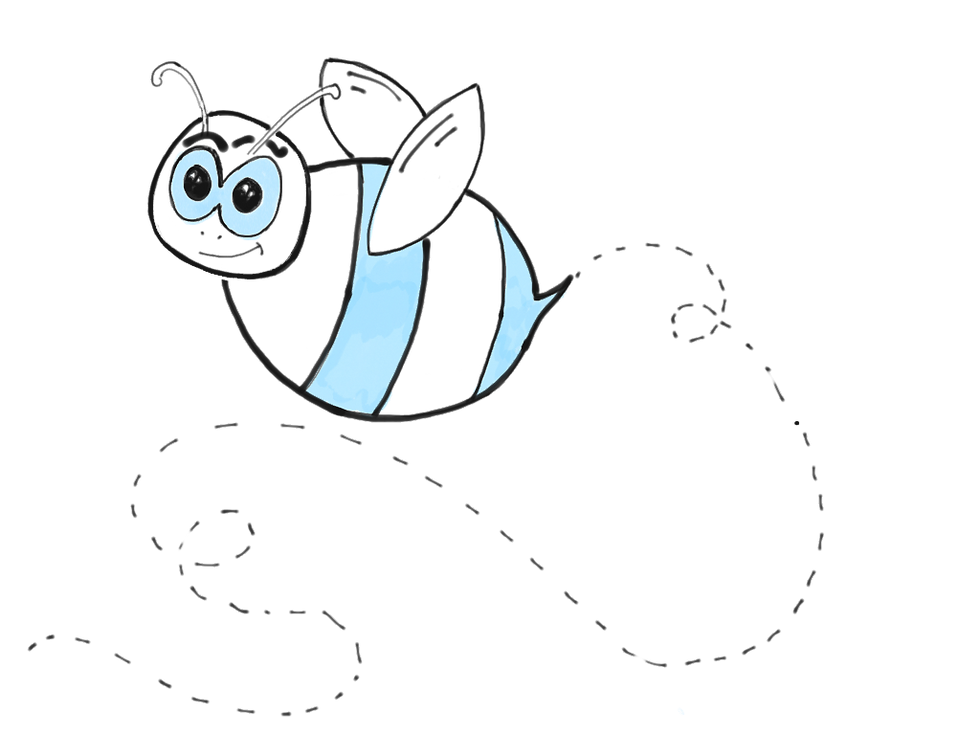
According to all known laws of aviation, there is no way a bee should be able to fly. Its wings are too small to get its fat little body off the ground. The bee, of course, flies anyway because bees don't care what humans think is impossible. - Jack Fraser - Master's physics, University of Oxford
The laws of aviation, brilliantly applied to the flight of airplanes, don’t apply to the flight of a bumble bee. By our measure and understanding of aviation, the bumble bee is thinking wrong, and getting on with what it has to be. Using the resources available to it.
We know this stuff
Life, is wonderfully resourceful, thanks to survival being hard-wired. Nature has intrinsically motivated all things living, to pursue the conquest of obstacles. You see it in little saplings that peep out of layers of concrete, where they shouldn't. You’d observe it in yourself and the everyday little obstacles you overcome intuitively, with clever applications of resources available to you. Could you recount how many ways you might have opened a bottle cap that didn’t involve a bottle opener?
With an increasing need, more spectacular forms of resourcefulness emerge. Nick Vujicic, born without arms or limbs, can play football, swim and surf – with the resources available to him. But wait, don’t you use arms and legs for those sports? Think wrong! Applying the knowledge from a science book in the village library, his father’s bicycle and other scrap, 14 year William Kamkwamba created an electricity producing wind turbine for his village in Malawi. How is any of this possible? How could plastic bottles pay for education or sugarcane fuel airplanes? In all of these, potential was identified and tapped within constraints, within limited resources to unleash creativity. Part of the essential ingredient is a deep personal need which gives rise to thinking differently, thinking wrong. Working with what you have, to do what you can’t (at least by conventional thinking).
This stuff we don’t know - breaking Fixedness
The ever-elusive question is how to decode that mindset of deep personal need and motivation that drives inventiveness, to be transportable and repeatable.
Companies think of resources as an inventory of money, time, employees, technology, etc. Throwing in more of the same in the hope of better results, although there is no validated positive correlation between them. Fixed notions, that innovation comes from getting new things (tech, skills ...) to make new things (radical disruption), has taken centre stage. Ensuing investments and related risks are becoming more and more intimidating, crippling any relevant change.
On the contrary, the ability to look within an organisation and see things differently, is much less practiced. As Karl Duncker described it, what stifles creativity is the tendency to see objects and situations as only working in a particular way. Humans swim with hands and legs. Plastic bottles transport water at best, and pollute the environment at worst. Sugar is made from sugar cane. Putting to use existing resources in new ways, re-purposing skills, departments, services and products to meet changing expectations, is a path much less trodden.
Get to know and understand the parts and people in your organisation currently delivering value in the run-of-the-mill, core business. They can be as much your innovators. Breaking away from the fixedness of how existing assets and capabilities are perceived and providing opportunity to be different, to be wrong, can get you surprising results. Channeling these untapped powers takes awareness of the assets. Activities framed around looking-inside the organisation are more relevant for change than any number of senior management tourist trips to the Valley. Acknowledging their existence and establishing a system to harvest its potential, entails the elaborate task of forming a vision. Hand-picking a few chosen employees to work in innovation Lab’s is less a system with a vision than an island with a shelf-life. Not just the block-chain expert you just recruited, key resources are also the experts with 15 years of experience with your company. They know where you’re coming from, how to navigate the market. They have built the partnerships and networks you will need for the future. Your present products, their strengths and weakness are all part of available resources.
Think wrong
Start by learning how to identify assets/resources within your topic (organisation, product, service).
Gain an in depth, keen understanding for the system (product, process or service) within which you operate, including customers and partners – all the parts that you can influence positively or negatively. Define these as your boundaries.
Know what forces within that system work in contradiction to the ideal desired outcome. Explore these further.
Understanding your market and changing customer needs still remains central to the value adding process.
Set constraints to limit yourself within the defined system and the parts you can influence – the level of resourcefulness will be influenced by how close you remain or far you stray away from the resources available to you within the system.
Start looking at the parts of system to start altering them.
Apply systematic and structured processes of resourceful innovation to see known parts, functions and experiences radically differently (exercise your bottle opening creativity with a systematic approach).
Keep checking back on contradictions and measures of qualitative change.
Take the path of greatest resistance to discover new possibilities.
The less sense the new perspective makes at first sight, the better. Aim to be absurd.
Keep going until you become more bumble bee 😊!
Read also:

コメント